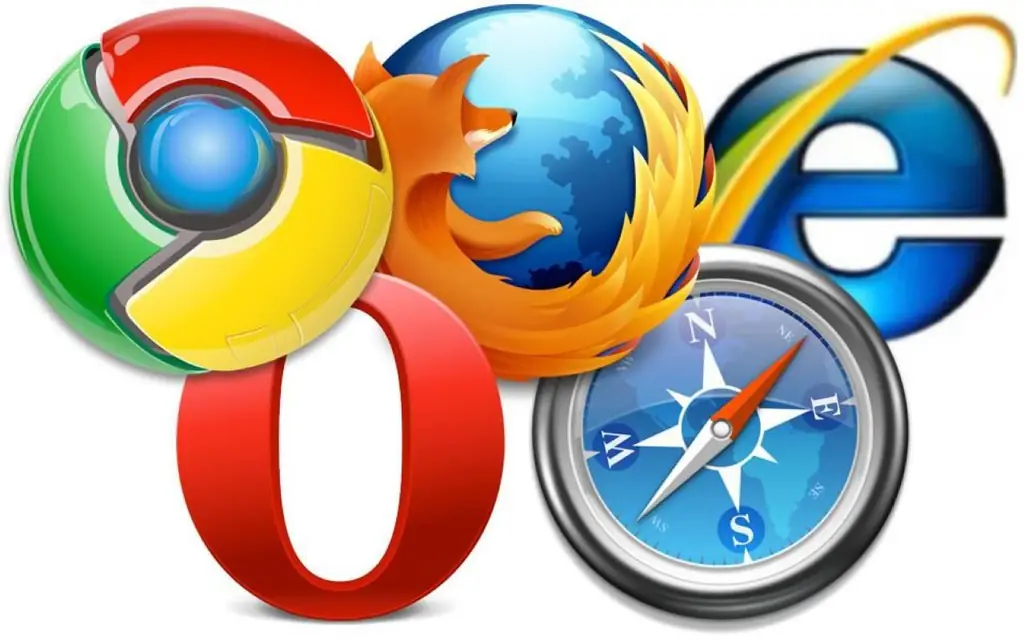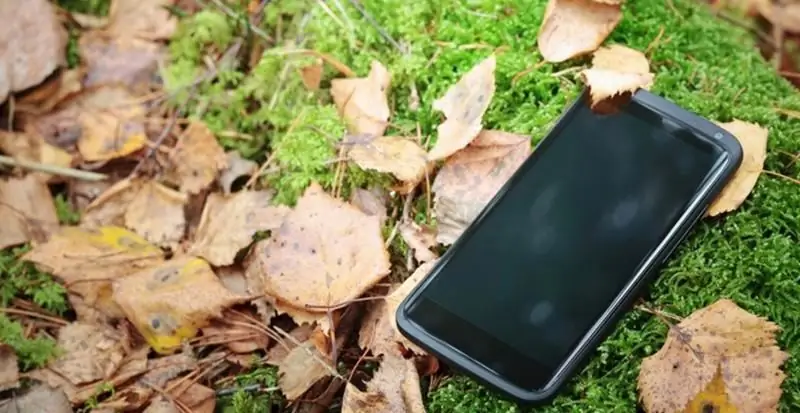
Table of contents:
- Author Bailey Albertson [email protected].
- Public 2023-12-17 12:53.
- Last modified 2025-01-23 12:41.
How to uninstall the browser and all its files in Windows 10 and Android

The user of any version of the operating system Windows or Android has the right to install as many browsers as he wishes. But at some point the installed programs will become redundant, so they will have to be removed. For this case, both computers and phones provide several methods to erase the browser.
Content
- 1 Why uninstall the browser
-
2 Removing third-party browsers in Windows
- 2.1 Via browser file
- 2.2 Via the control panel
- 2.3 Video: Remove Browser
- 3 Clearing the registry
-
4 Clearing a backup of user data
4.1 Video: Cleaning the Registry with CCleaner
- 5 Removing the default browser
-
6 Remove Browser from Android
6.1 Video: Removing a Third Party Application from Android
Why uninstall the browser
There are two reasons that can lead to the need to uninstall the browser:
- you have found a more modern or suitable analogue, so an unused browser is no longer needed;
- there were problems during the use or updating of the browser that cannot be solved in any other way other than by a complete reinstallation.
In Windows 10, as in previous versions of the system, there is a standard browser - Edge (Internet Explorer in Windows 8 and earlier). You cannot erase it using the usual methods described for third-party browsers, since it is protected by Microsoft. Therefore, to remove the default browser, you must use a special method, which is discussed in a separate paragraph "Removing the standard browser".
Removing third-party browsers on Windows
A browser will be considered a third-party browser if it is installed by the user and was not bundled with Windows by default. In Windows 10 there is only one standard browser - Edge, in all previous systems - Internet Explorer of different versions (IE 8, IE 7, IE 5….).
Removing any third-party browser is the same as removing any other third-party program. But there is one peculiarity - sometimes folders with some user data remain from erased browsers. They are saved in case the user changes his mind and wants to reinstall the remote browser. In this case, it will be possible to quickly recover all his passwords, personal settings and other information. If you are sure that you do not need the backup, then after successfully getting rid of the browser, refer to the "Clearing the backup copy of user data" section.
Also, after clearing the computer's memory from the browser, it is necessary to clean the registry in order to avoid clogging it up with the remaining keys and files.
Via browser file
In most cases, the creators of any program add a small utility to the set of files created after installing the application that allows them to remove their program. Usually it has the name Uninstall or similar abbreviations from it - Unins, Unst … To find it, you need to do the following:
-
You need to be in the folder where the browser was installed. If you remember where it is, open the explorer and go to it. The second way to find it is to right-click on the browser shortcut and select the "File Locations" function, which will automatically find and open the appropriate folder.

Go to the browser folder We call the function "File location"
-
If in the opened folder there is a utility named Uninstall or something similar to it, then run it and allow the uninstallation of the program. There is a chance that it is not there (for example, Yandex Browser did not have such a utility). In this case, it remains to use any of the other methods described below.

Uninstallation via Uninstall file Some browsers have an Uninstall utility
Through the control panel
It is more convenient and easiest to remove the browser, like any other third-party program, through the control panel, since a special section is sewn into it, through which this can be done in a couple of clicks:
-
Expand the control panel. You can find it using the system search bar.

Go to control panel Opening the control panel
-
Navigate to Programs and Features. If it is not in the initial list, type its name into the built-in search bar.

Go to the program list Open the section "Programs and Features"
-
A list of all programs will appear. Find the browser you want to delete in it, select it and click on the "Delete" button. The computer will ask you if the selected application should really be erased - confirm the action.

Removal via control panel Select the browser and click the "Delete" button
Video: Remove Browser
Clearing the registry
After the browser is removed using one of the above methods, keys and files may remain in the registry that no one will need anymore, but will be stored. Of course, several keys from one browser will not noticeably affect the computer's performance, but if you erase programs for a long enough time and do not clean the registry, you can wait for errors to appear.
There are two ways to clean the registry - manual and automatic. The first is that you yourself will find the remaining files and erase them. Of course, you can use it, but it is not recommended to do this for two reasons:
- it will take some time to find all the files, since you have to comb through large-scale branches of the registry manually or use the built-in search bar and delete the found elements, but for this you need to know the search keywords and file names. However, there is no guarantee that some keys will not be missed;
- deleting browser files, you can accidentally touch the elements necessary for the correct operation of the system. Damaging them will cause Windows errors or termination. You will have to restore the registry or reinstall the system manually.
Based on the above reasons, we can conclude: it is better to use automatic registry cleaning. Any third-party program that can work with the registry will help with this. For example, the free version of the CCleaner app.
-
After downloading CCleaner and running it, go to the "Registry" block using the menu on the left side of the window.

Transition to working with the registry Open the "Registry" section
-
Click on the "Troubleshoot" button to run the registry analysis. After a while it will be finished, it remains to click on the "Fix" button.

Cleaning the registry through CCleaner Press the button "Search for problems"
After completing the procedure, you can consider the registry cleared.
Clearing a backup of user data
After deleting the browser, some temporary files remain in the system memory, storing information about user data and settings. They may be needed when restoring the browser, but if it is not expected, then they can be permanently removed by following these steps:
-
If you are using Windows XP, then using Explorer navigate to the folder - System_disk / Documents and Settings / Account_name / Application Data / Browser_name. If you are using Windows Vista, 7, 8 or 10, then go to the folder System_disk / Users / Account_name / AppData / Local / Browser_name. The target folder, required from the operating system version, must be erased using the usual “Delete” function.

Delete browser folder Go to the rest of the browser and delete them
-
If the above folders are not on your computer, you have two options: they have already been deleted or hidden. First, you should check if they are hidden. To do this, in the top pane of the explorer, select the "View" tab and put a check mark next to the "Hidden items" line. Done, now all previously hidden folders should be displayed. If the elements you are looking for appear, delete them, if nothing new is displayed, then everything has already been erased.

Enabling the display of hidden items We put a tick in front of the line "Hidden elements"
Video: Cleaning the Registry with CCleaner
Removing the default browser
There is no way to permanently remove Edge or Internet Explorer from your computer. If its files are damaged, they will be restored after the next system update. But there is an option to block any access to the browser, which is almost equal to removing it.
-
Find and run a PowerShell command prompt as administrator.

Launching Power Shell Open Power Shell as administrator
-
Run the Get-AppxPackage query to get a complete list of programs installed on your computer. Find the block with the browser you want to block in it. Copy the full name of its package from the PackageFullName line.

Getting the browser package name Copy the full package name
-
Run the command Get-AppxPackage X | Remove-AppxPackage, where X is the value copied in the previous step.

Removing a browser package We execute the command Get-AppxPackage X | Remove-AppxPackage
Done, the unwanted browser has been blocked. Access to it can be restored in the future, but only after user intervention, and not at the request of the system.
Removing browser from Android
Removing any browser downloaded from the Play Market or from a third-party source is much easier on Android than on a Windows computer:
-
Go to device settings.

Go to device settings Opening Android Settings
-
Select the Applications tab. It can be called differently, the main thing is that it contains a list of installed applications.

Go to the list of Android apps Open the section "Applications"
-
Find the browser you want to get rid of and click on it.

Application selection Select the browser to be deleted
-
Click on the "Delete" button and confirm the action in the notification that appears. Done, in a couple of seconds the browser will be deleted.

Removing the browser on Android Click on the "Delete" button
Erasing the default browser installed in Android firmware is usually much more difficult, as the firmware developers prohibit uninstalling native apps. There are, of course, ways to do this, but they require hacking the installed firmware or obtaining root rights, and these actions without a skillful approach can easily harm the device.
Video: uninstall a third-party app from Android
You can remove a third-party browser from Windows using its own utility or control panel. To completely clear the computer's memory, you need to automatically clean the registry and manually erase the remaining folders. The standard browser is blocked by running commands in PowerShell. You can remove the browser on Android through the system settings.
Recommended:
How To Find A Phone If It Is Turned Off - At Home And In Other Places, Search For A Device On Android And Other Os Through A Computer, By A Sim Card, Imei

Various ways to find the switched off phone. When the device cannot be found and how not to lose it
How To Completely Remove The Amigo Browser From Your Computer - Instructions And Tips With Photos And Videos

Stages of removing explicit and hidden files of the Amigo browser, including from processes and startup. What to do if the browser is installed again after uninstallation
Browser Amigo - How To Download And Install For Free On A Computer, Instructions With Photos And Videos

How to install and quickly configure the Amigo browser. Features of the browser for different social networks, fixing the most common errors. How to quickly remove
How To Completely Remove Yandex Browser From A Computer - Instructions And Tips For Taking Photos And Videos

How to remove Yandex.Browser on all operating systems. Proven step-by-step instructions
What To Do If An Advertisement In The Browser Opens Itself, How To Remove A Virus That Opens Advertising Sites - Instructions And Tips

Reasons for the appearance of advertising in the browser. How to remove viral banners, images, sounds. Installing blocking extensions: AdGuard, AdBlock, Ad Muncher
